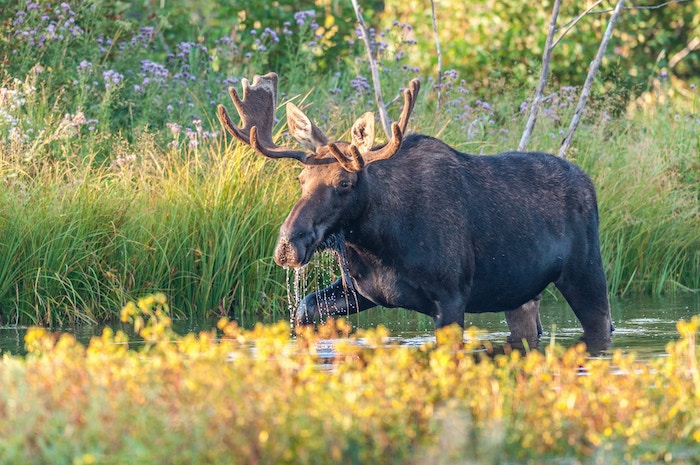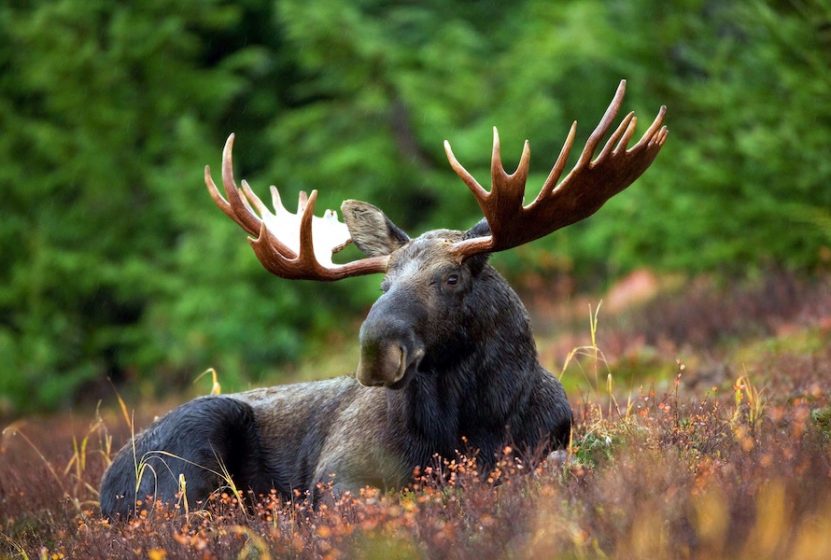The moose (Alces alces) is the largest member of the deer family, standing up to seven feet tall at the shoulder and weighing over 700 pounds.
The long-legged and long-muzzled animal’s name is derived from the Algonquian word “moosh” (eater of bark).
There are four moose subspecies in North America. The Alaskan moose (Alces alces gigas) is found in Alaska and northwestern Canada. The eastern moose (Alces alces americana) is located in the northeastern U.S. and eastern Canada. The northwestern moose (Alces alces andersoni) is found in North Dakota and central Canada. And the Shiras moose (Alces alces shirasi) can be found in the American and Canadian Rocky Mountains.
There are approximately 500,000 to one million moose in the northern regions of North America. They prefer to live in a mixed deciduous and boreal forest with close access to lakes and rivers.
A moose’s diet is primarily comprised of deciduous shrubs and conifers. In the summer, they use their sensitive muzzles to forage for aquatic vegetation.
While feeding, a moose can dive and stay submerged for almost one minute. A moose can also swim up to six m.p.h. for two hours at a stretch.
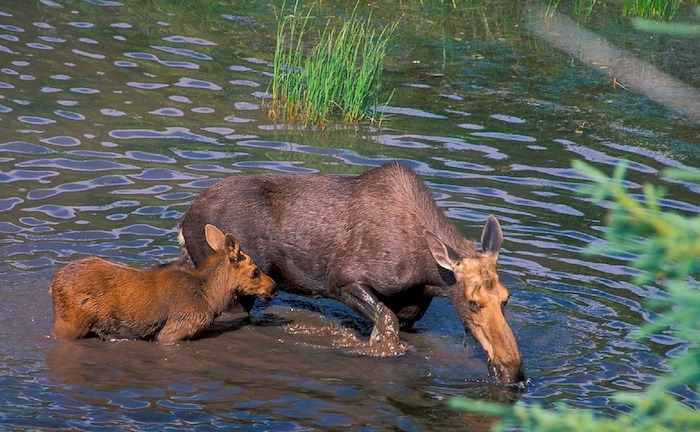
A moose will typically stay in a smaller range of 5-25 square miles if it can find food in abundant supply. Where food is scarcer, like Alaska, a moose may have up to a 150-square mile browsing range.
Due to their size and large antlers, which can reach six feet in length and weigh 40 pounds, moose are not an easy meal for wolves, bears, and mountain lions. A moose’s common tactic to avoid predators is to run, or trot, at high speed to exhaust its pursuer. While a moose can sprint short distances as fast as 35 m.p.h, it can trot at 20 m.p.h. long enough to wear out most predators.
For an endurance predator like a wolf, the moose will run until it can find a spot to fight on its own terms. A moose’s preferred defensive position is water shallow enough for the moose to stand and maneuver, but deep enough to hamper the wolf’s movements without allowing it to swim.
In general, moose lead a solitary life except during the mating season in September and October. A dominant male (bull) attract females (cows) by creating rutting pits, urinating in them, and then rolling in the urine-soaked mud. Females will also call to attract males.
Once the bull gathers a group of cows to create his “harem herd,” he’ll use his antlers to fend off any challenging males. A bull may get more than 50 puncture wounds during the mating season. Once the rut is over, the bull will shed its antlers.
The moose’s gestation period is about 230 days, with the one-to-two calves being born in June. The calf can stand on its own during the first day and will about 35 pounds, adding an additional 2 pounds per day while nursing.
Nearly half of moose calves will die due to wolf or bear predation before they are six weeks old. If they can make it to a full-grown adult at about four years of age, the survival rate jumps to 95 percent. At that point, a moose can expect to have a life span of 15 to 20 years.
The calf is weaned at six months and will stay with its mother until she is ready to give birth the following year. At that point, the yearlings are chased off to find new foraging grounds.
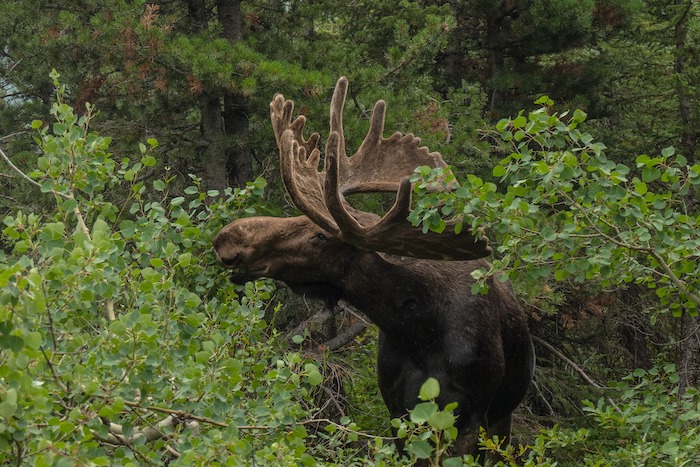
The moose was an important food source for many Native Americans, with the moose’s nose considered a delicacy. Moose stomach and hardened skin were also used for storage containers and cooking vessels. Moose hide was also used by several tribes to make canoes.
If you run into a moose in the wild, it will do one of two things: run away or charge you. While there is no recommended safe distance, a good rule of thumb to remember is if you’re close enough to cause a moose to alter its behavior, you’re too close.
Warning signs that a charge may be coming your way is the moose flattening its ears back and the hair standing up on the back of its neck or hips. The moose could also smack its lips, toss its head upward, or urinate on its back legs.
Again, if you’re close enough to see this behavior, you’re too close !
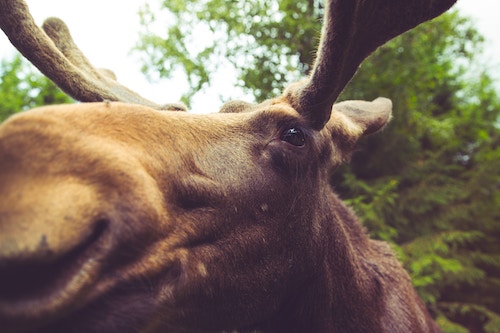
***Of course, the moose could also give no warning signs and just charge.
Most likely, the moose wants you out of its territory. If you can, slowly walk away. If the moose wants you out quicker and charges, use the Nike Defense: run. As you sprint for safety, try and keep a tree between you and the moose. You can maneuver around a tree faster than the moose.
Although a moose usually won’t chase you far, it could be far enough that you lose the foot race and get knocked down. If the moose is trying to curb stomp you at this point, curl into a ball and protect your head with your arms. Trying to move or fight back will usually end up in a prolonged beat down with the moose’s front hooves. Once the moose has stopped and moved a safe distance away, make your escape.
